If you’re a fan of Cheese Triangles, you won’t want to miss out on trying this recipe. These homemade Greek Cheese Triangles are an absolute hit for any gathering. With a subtle yet wonderfully cheesy filling, my mum’s cheese triangles include a secret ingredient: béchamel! Whether it’s a fancy event or a laid-back gathering, this appetiser is guaranteed to impress your guests.

Growing up, Greek Cheese Triangles were a feature at every special occasion we celebrated and were literally the first food we served to our guests. As a child, my mum just had to give me the look, and I knew that meant grabbing the serviettes and passing the plate of cheese triangles around to our guests.
There was always a danger that people would fill up with the hors d’oeuvres served before the mains, but for me, the hors d’oeuvres were always my favourite.
My mum’s filling has a cheesy yet subtle flavour. The secret ingredient is the bechamel sauce. She combines the feta, ricotta, and parmesan cheese with a creamy bechamel sauce, resulting in a light and flavourful filling. The mixture is then wrapped in delicate layers of filo (phyllo) pastry and shaped into triangles which turn irresistibly crispy and flaky when baked.
My mother always had cheese triangles prepared in advance and stored in the freezer. She was always prepared for whenever we had guests, whether it was a special occasion or a casual afternoon tea. All she had to do was pop them in the oven for 20 minutes, making entertaining effortless and enjoyable for everyone involved.
Tiropites is Greek for cheese pies. Tiropitakia translates to mini cheese pies.
Greek Cheese Triangles Ingredients
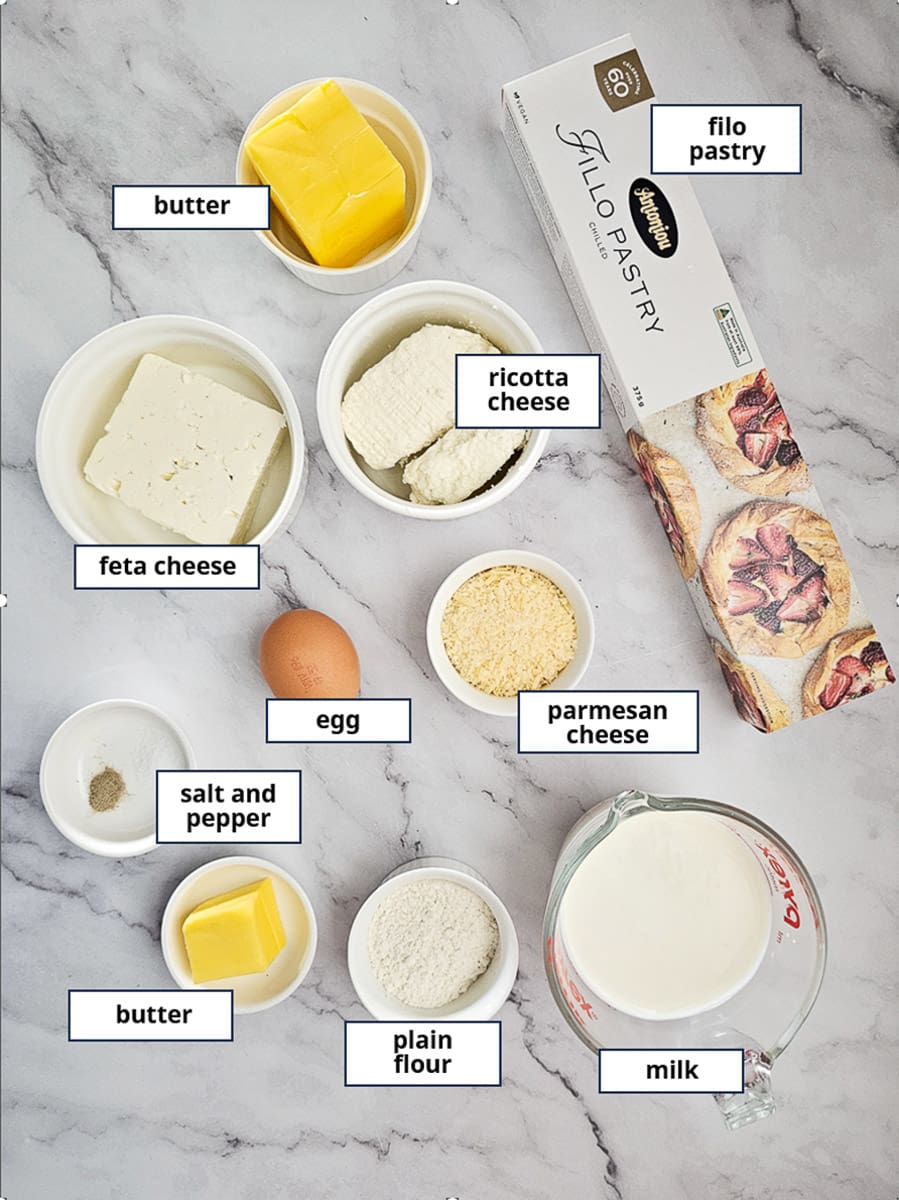
- Feta: The feta adds a tangy and salty kick to the filling. I usually use authentic Greek feta cheese made from sheep’s milk or a blend of sheeps and goat’s milk, not the Greek Style feta cheese, made from cow’s milk. However, you can use whatever feta cheese you prefer.
- Ricotta: Use whole milk ricotta, not low-fat ricotta. This adds a smooth and mild creaminess to the filling. It’s best to use the ricotta you buy from a delicatessen as it is firmer than the one bought in supermarket tubs, labelled ‘smooth ricotta’.
- Bechamel sauce: The addition of bechamel sauce enriches the filling, providing a velvety texture and creamy consistency that binds the cheeses together.
- Egg: Acts as a binding agent, helping to hold the filling together.
- Filo pastry: The filo pastry layers bring a delicate crispness and flakiness to the texture of the cheese triangles, providing a satisfying crunch while encasing the creamy filling.
- Butter: Butter is brushed between the layers of filo pastry to enhance flavour and promote the formation of a golden, crispy exterior when baked. Alternatively, for a healthier option, you can use olive oil instead.
How to make Greek Cheese Triangles (Tiropitakia)
- Place filo pastry on kitchen bench so that it can thaw to room temperature.
- Prepare béchamel sauce.
- Prepare filling.
- Melt butter.
- Cut filo pastry into strips and cover with a damp tea-towel.
- Start making your Cheese Triangles.
Make béchamel sauce
This method of making béchamel sauce is a quick, microwave method. You can make it on the stove top if you prefer. Instructions are in my Greek Pasta Bake recipe.
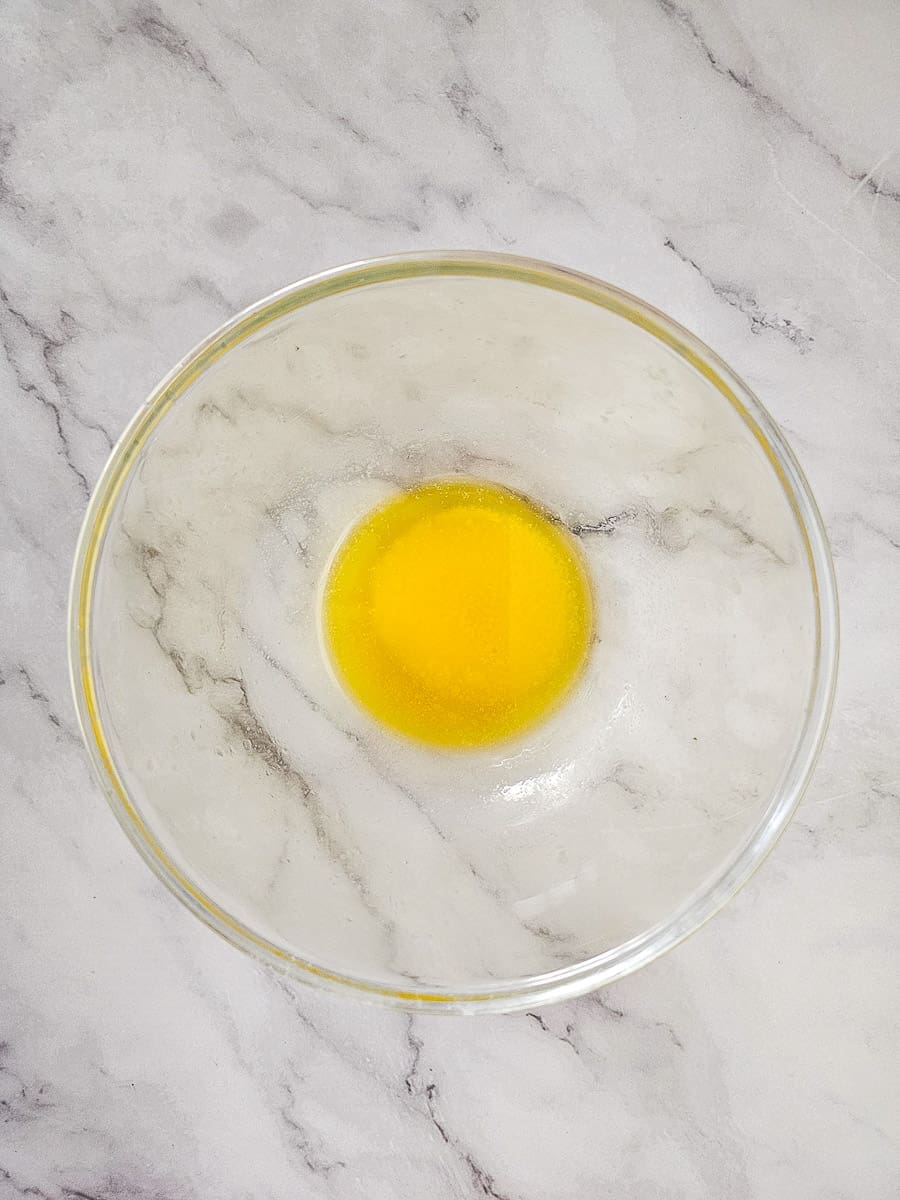
1. In a small bowl, melt butter in the microwave for approximately 30 seconds to 1 minute, or until fully melted.

2. Add flour. Stir or whisk well to combine, creating a smooth paste. Microwave the butter and flour mixture for about 30 seconds, or until the mixture becomes frothy and bubbly.
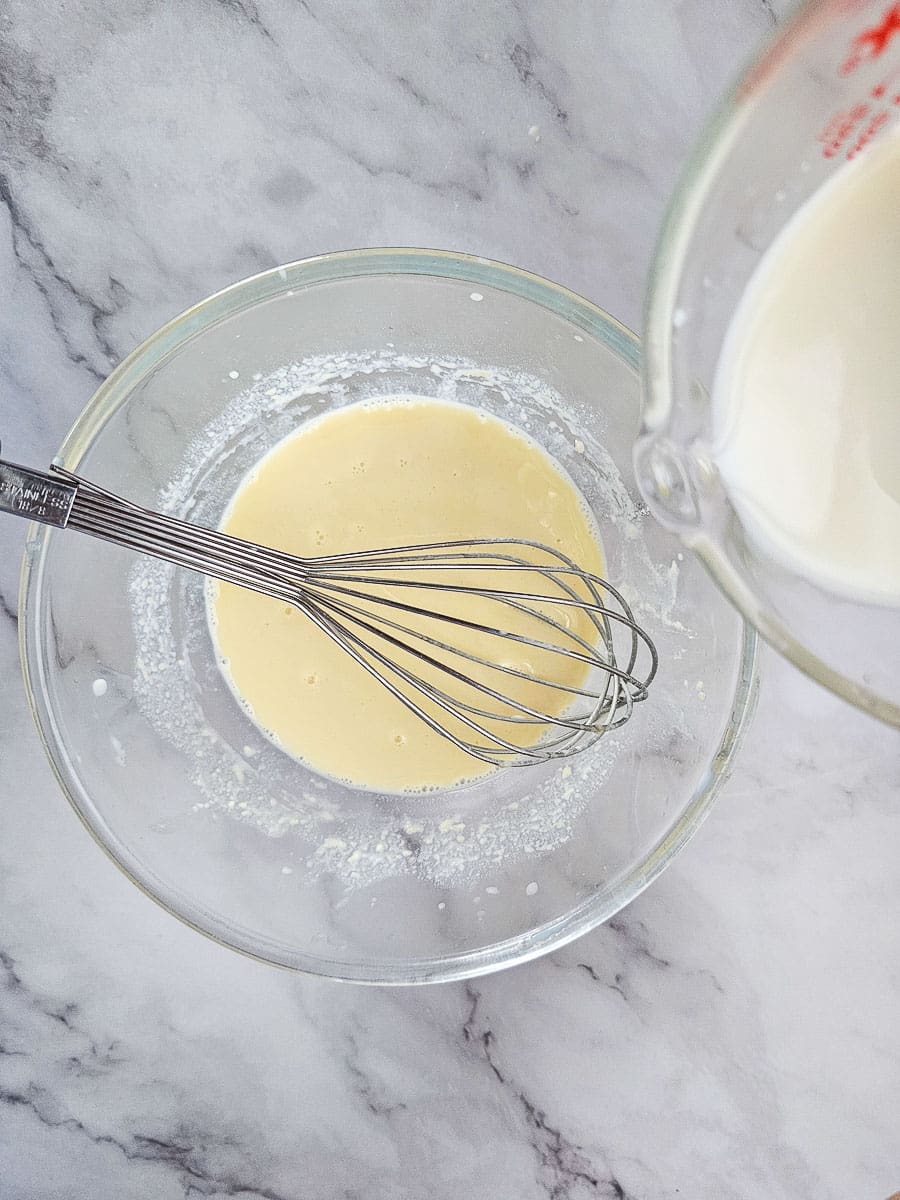
3. Warm milk in microwave for 30 seconds. Gradually add warm milk, whisking or stirring continuously after each addition to prevent lumps from forming. Season the sauce with salt and pepper.
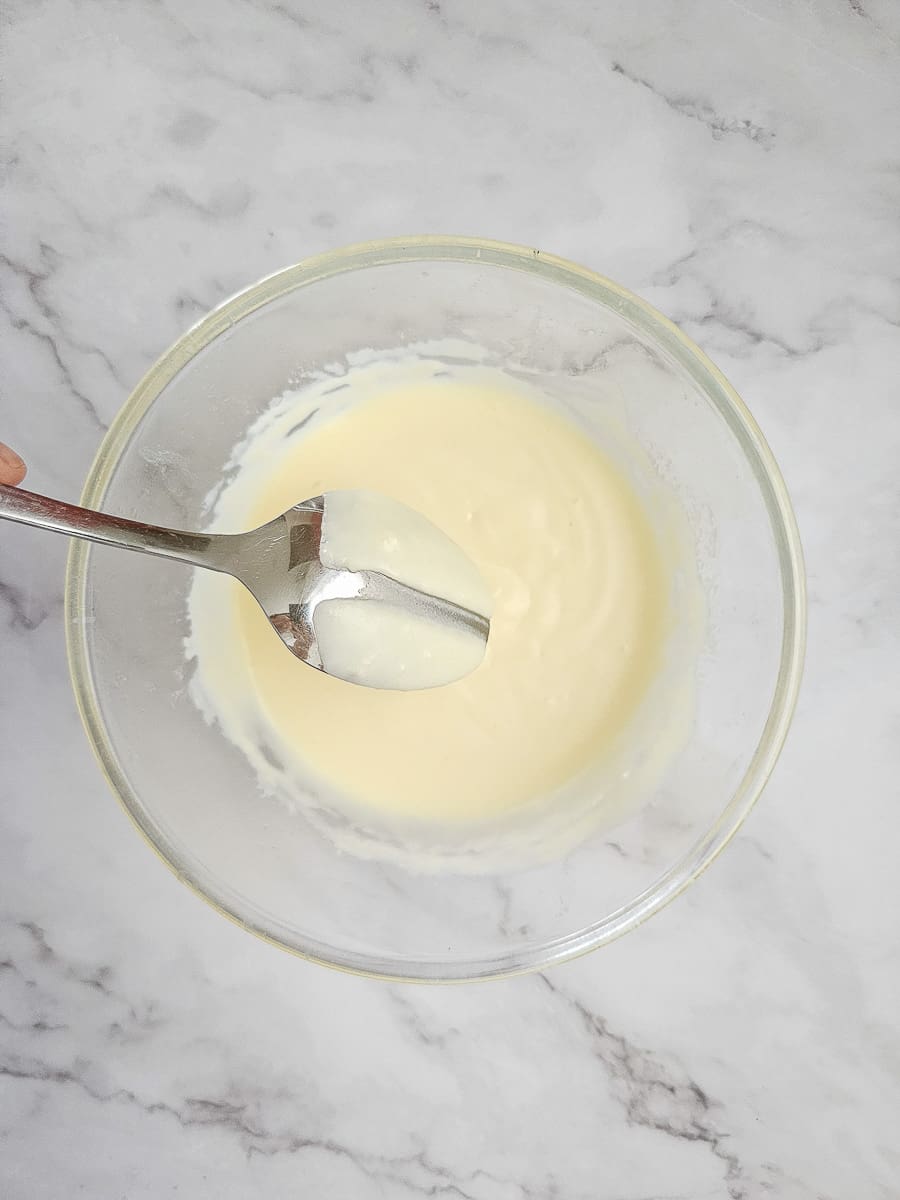
4. Place the bowl back in the microwave and cook the sauce in 1-minute intervals, stirring well after each interval. Continue this process until the sauce thickens, usually about 2-3 minutes in total. Set aside and let the sauce cool slightly.
Prepare filling
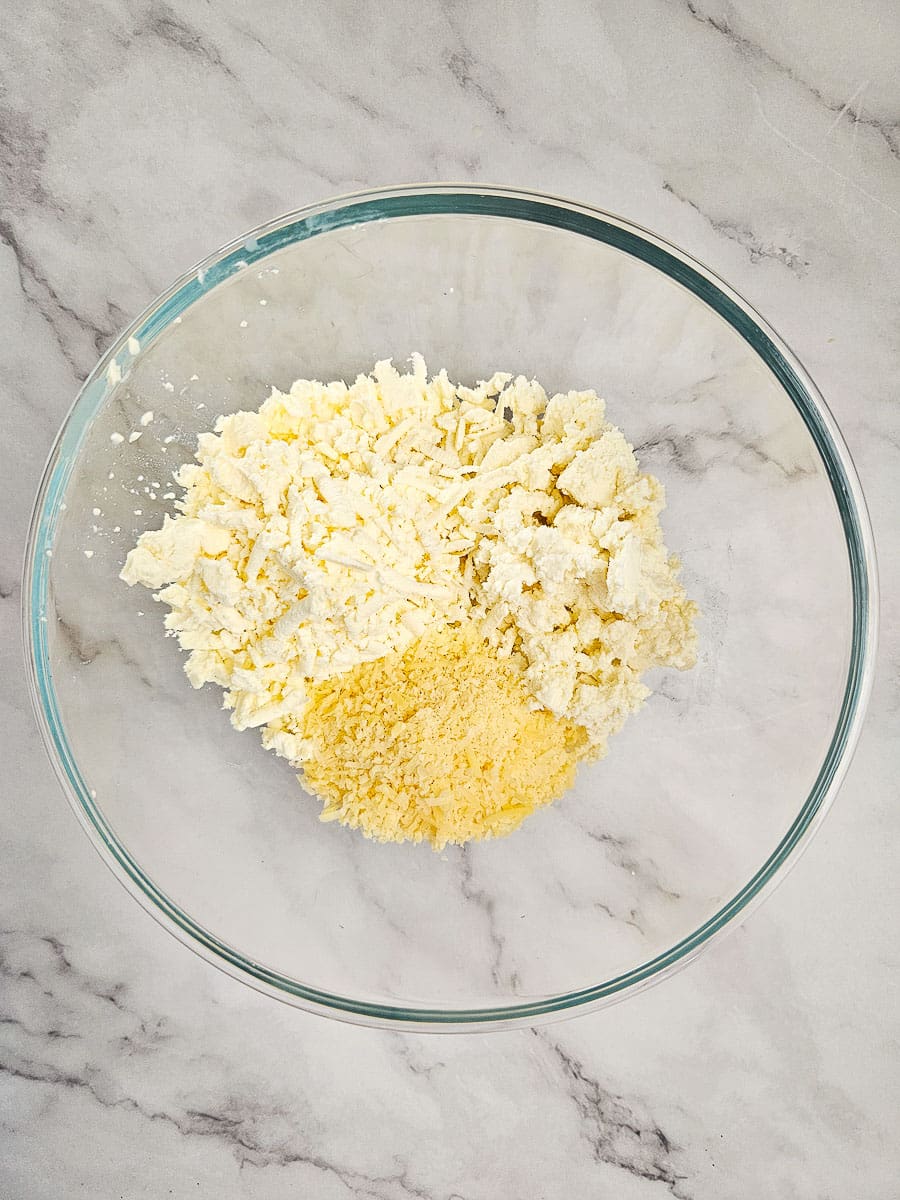
1. In a medium bowl, mix the feta, ricotta and parmesan cheese.
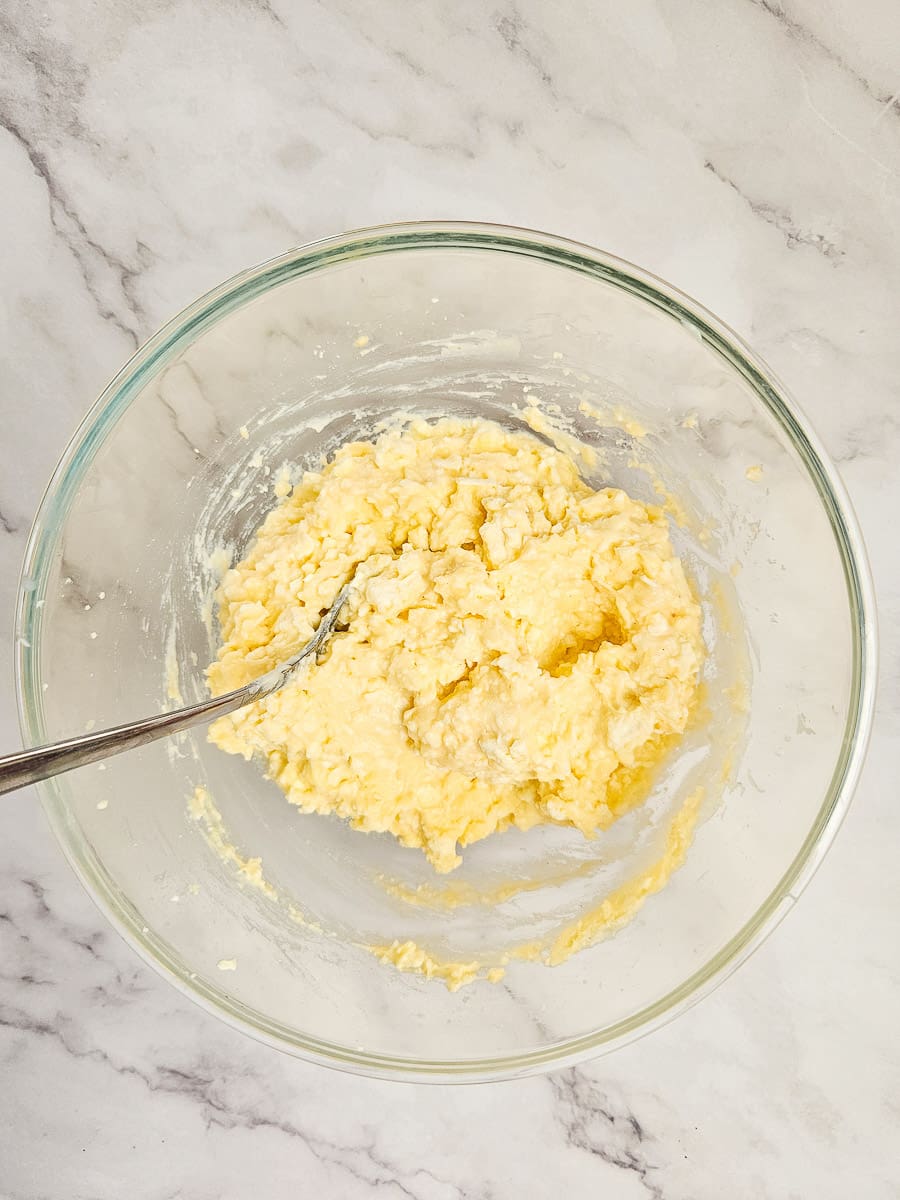
2. Stir through the cooled bechamel and the egg.
Cut filo pastry into strips

1. Place all the sheets of filo pastry on a cutting board with the long edge facing you. Using a ruler, measure 6cm / 2.36 inch-wide strips and using a sharp knife, cut through all the filo layers.
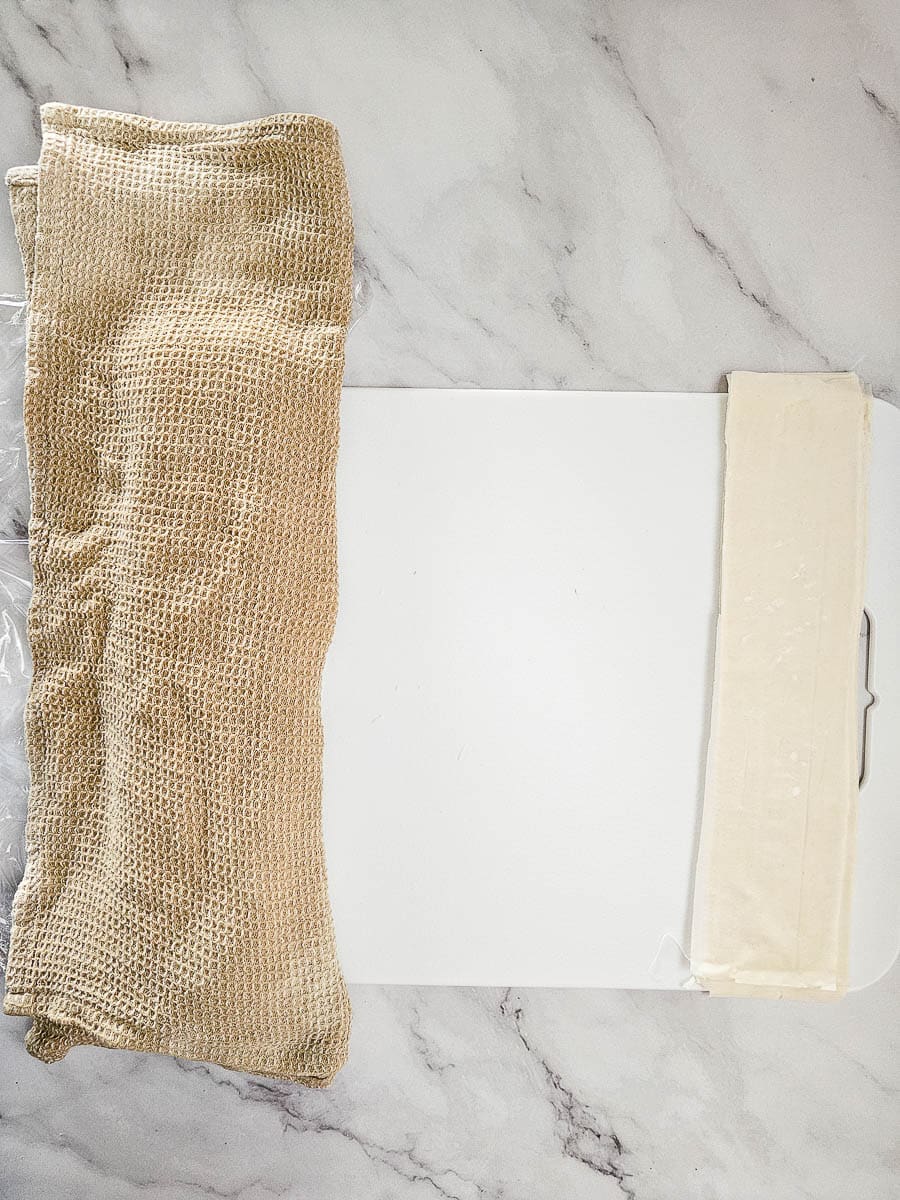
2. Stack cut pastry strips and cover with cling wrap and a slightly damp tea towel. Set a handful aside for easy access.
Assemble cheese triangles
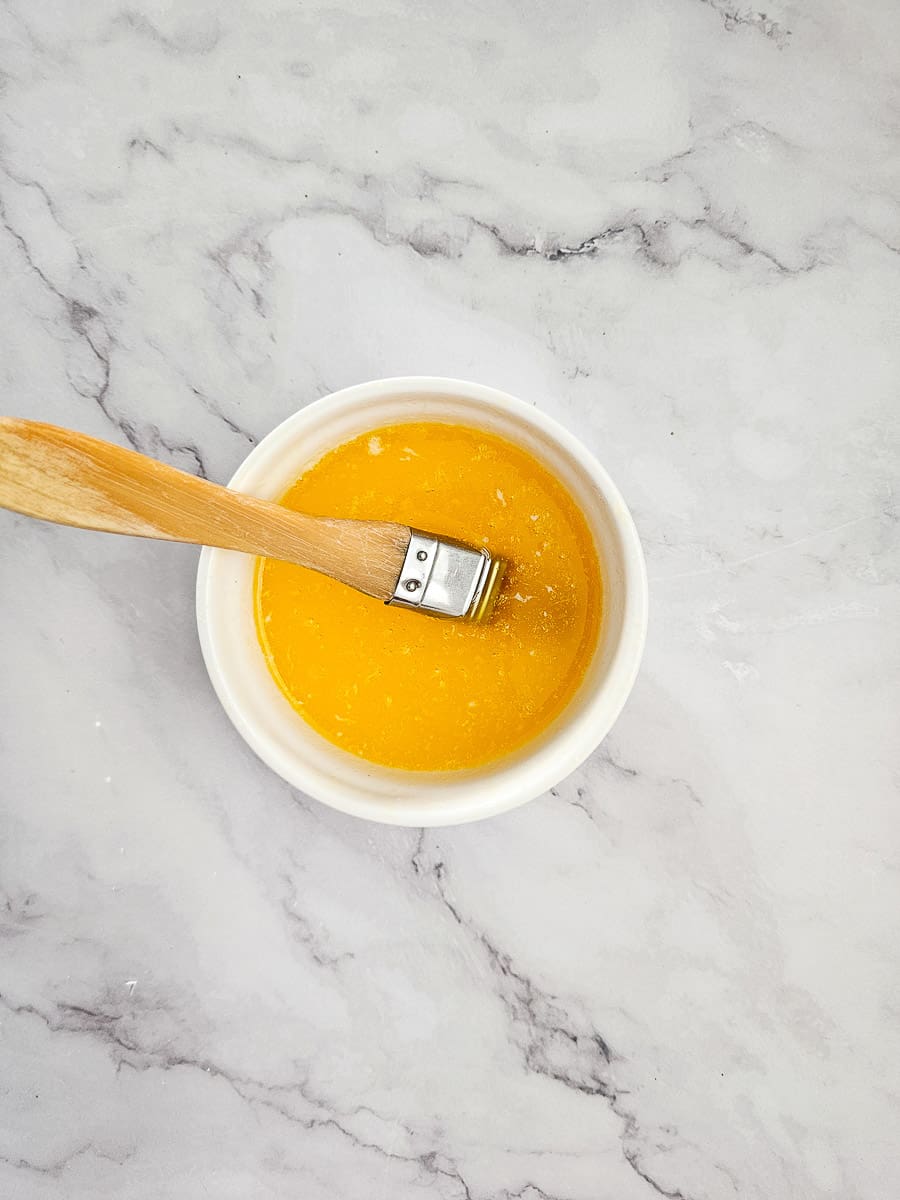
1. Melt butter in a small saucepan, or in the microwave.
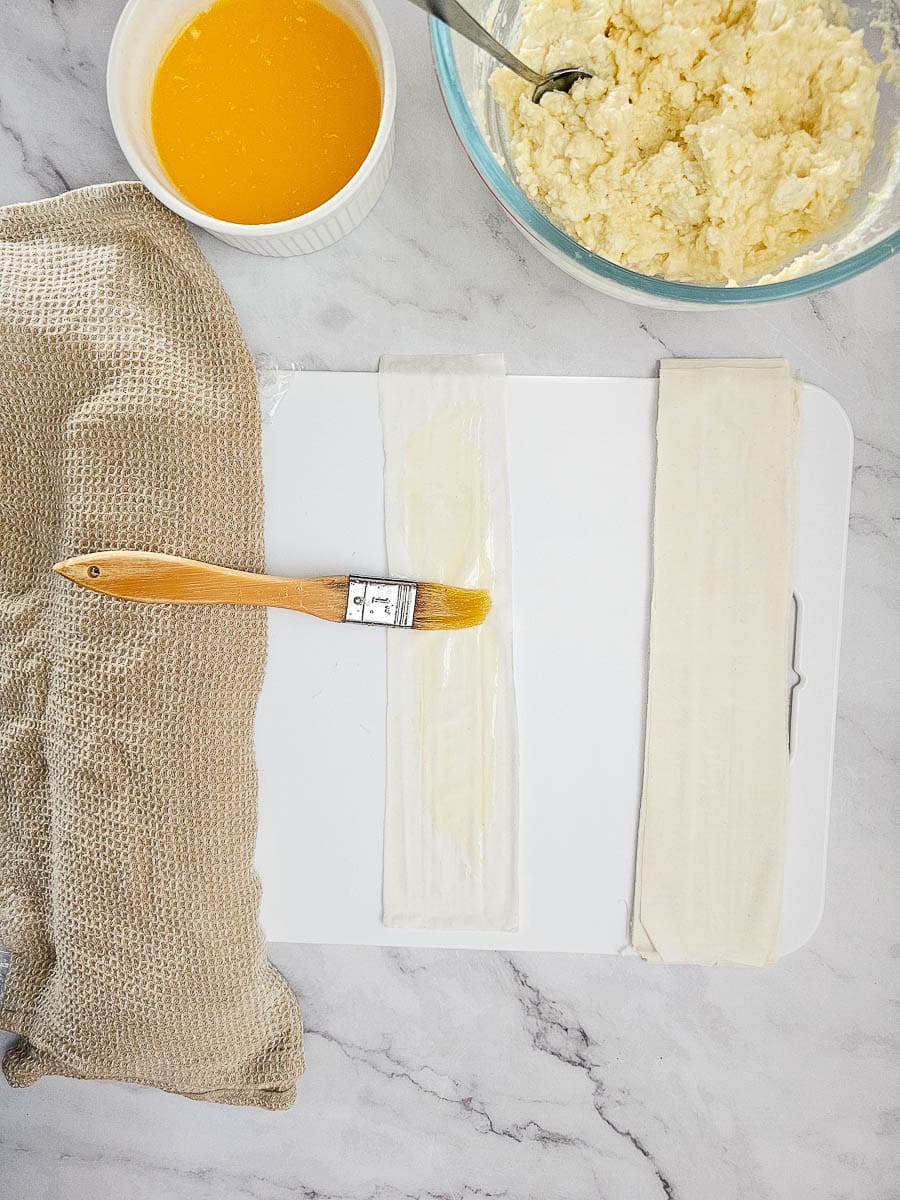
2. Place one sheet of filo pastry on the bench with the short edge facing you. Lightly brush with melted butter, down the middle and on the top end.
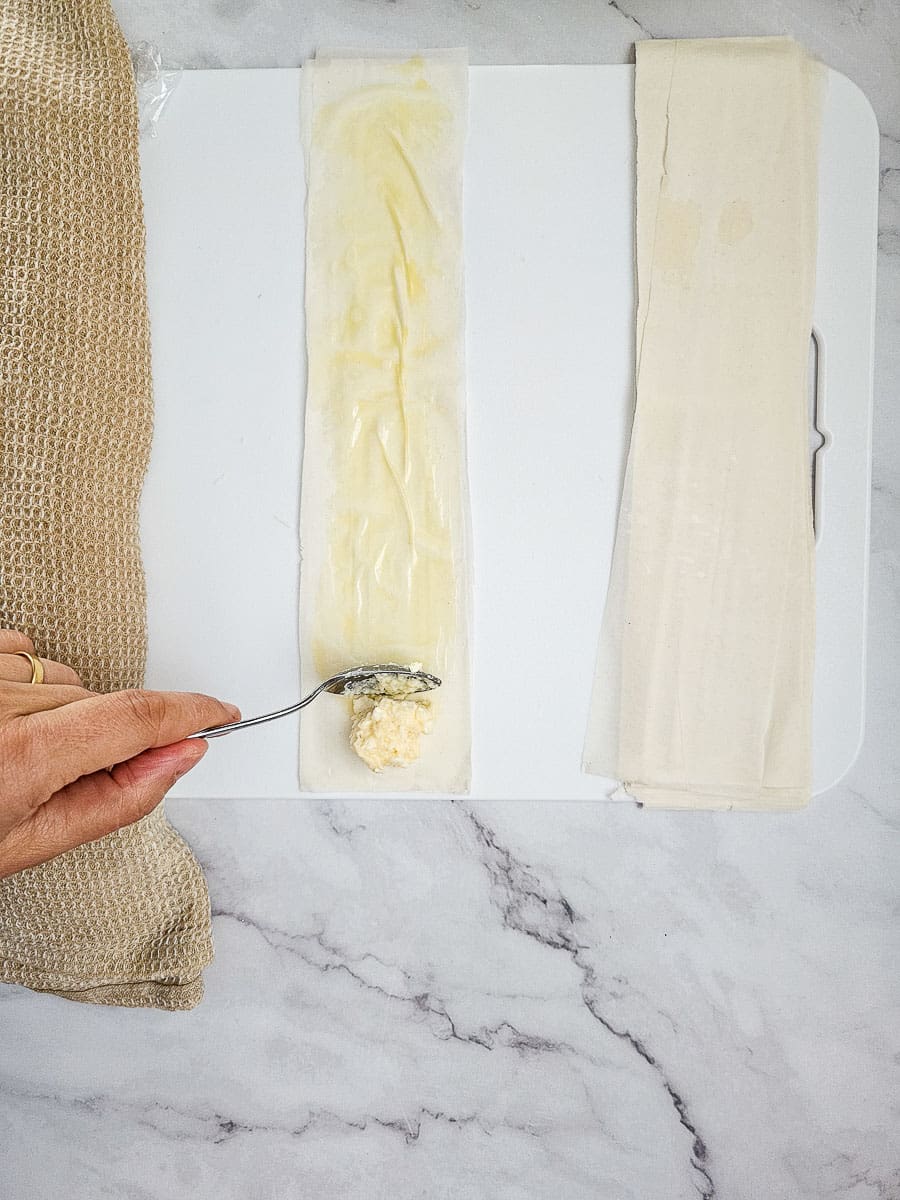
3. Add a second layer of filo on top of the first piece and once again, lightly brush with melted butter, down the middle and on the top end. Place a teaspoon of cheese filling at the bottom end of your pastry.
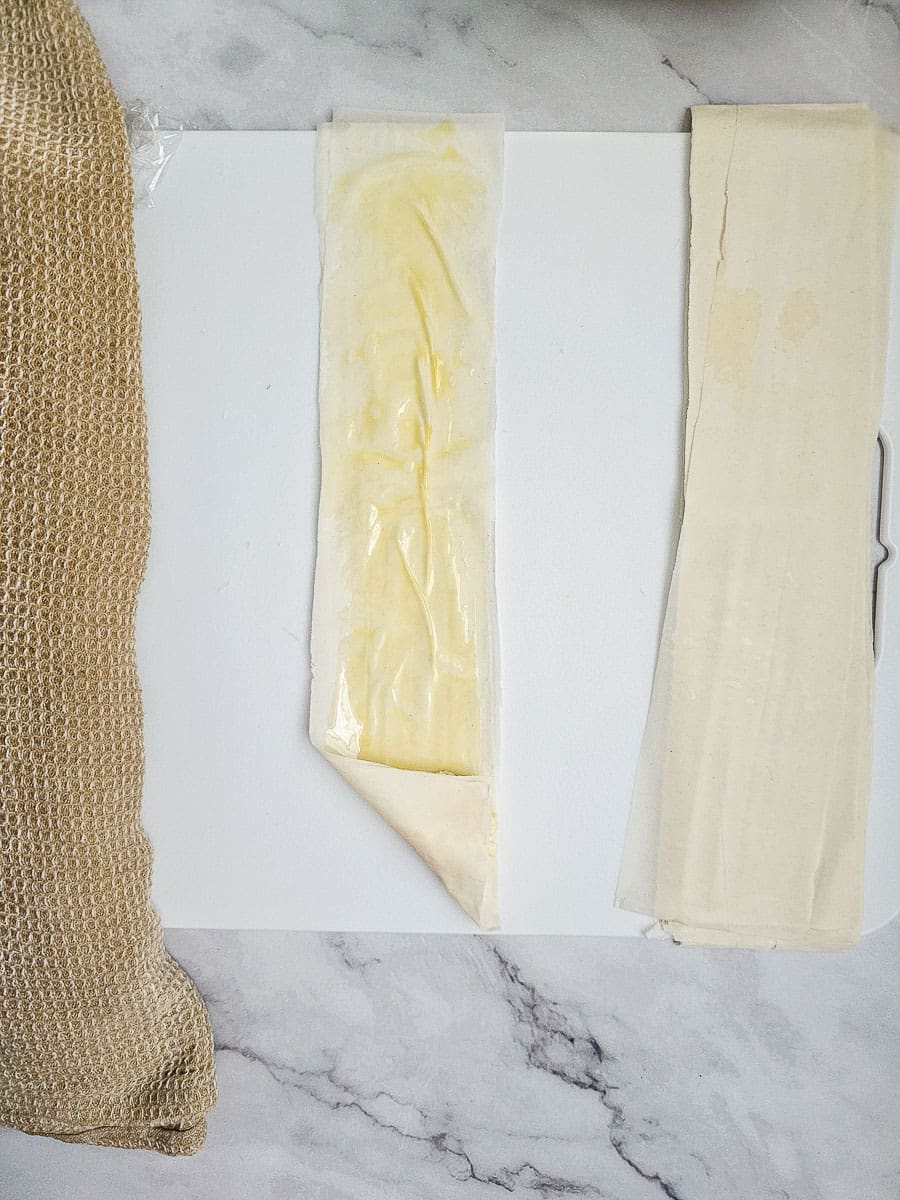
4. Take the left corner that is closest to you, and fold to the opposite side of your pastry.
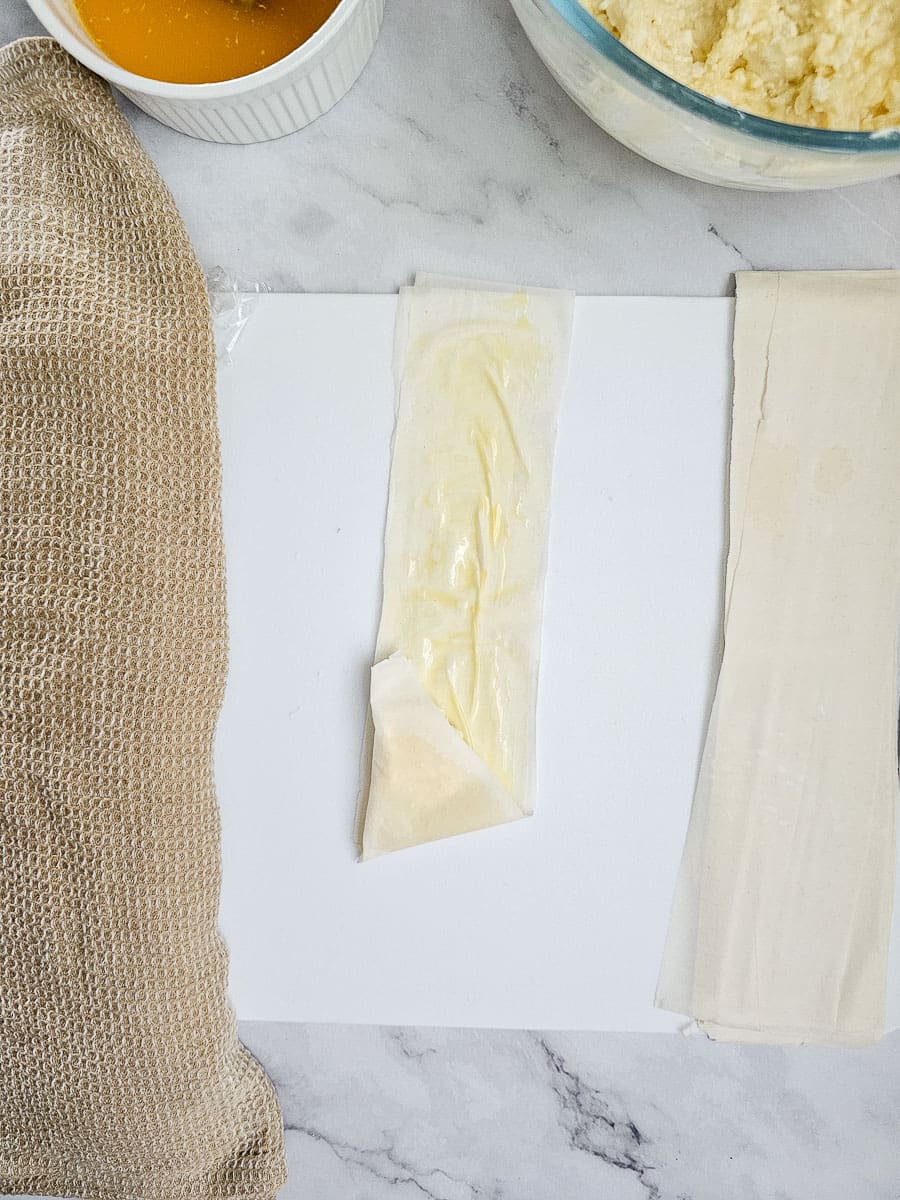
5. Now take the right corner, and fold to the opposite side of your pastry.
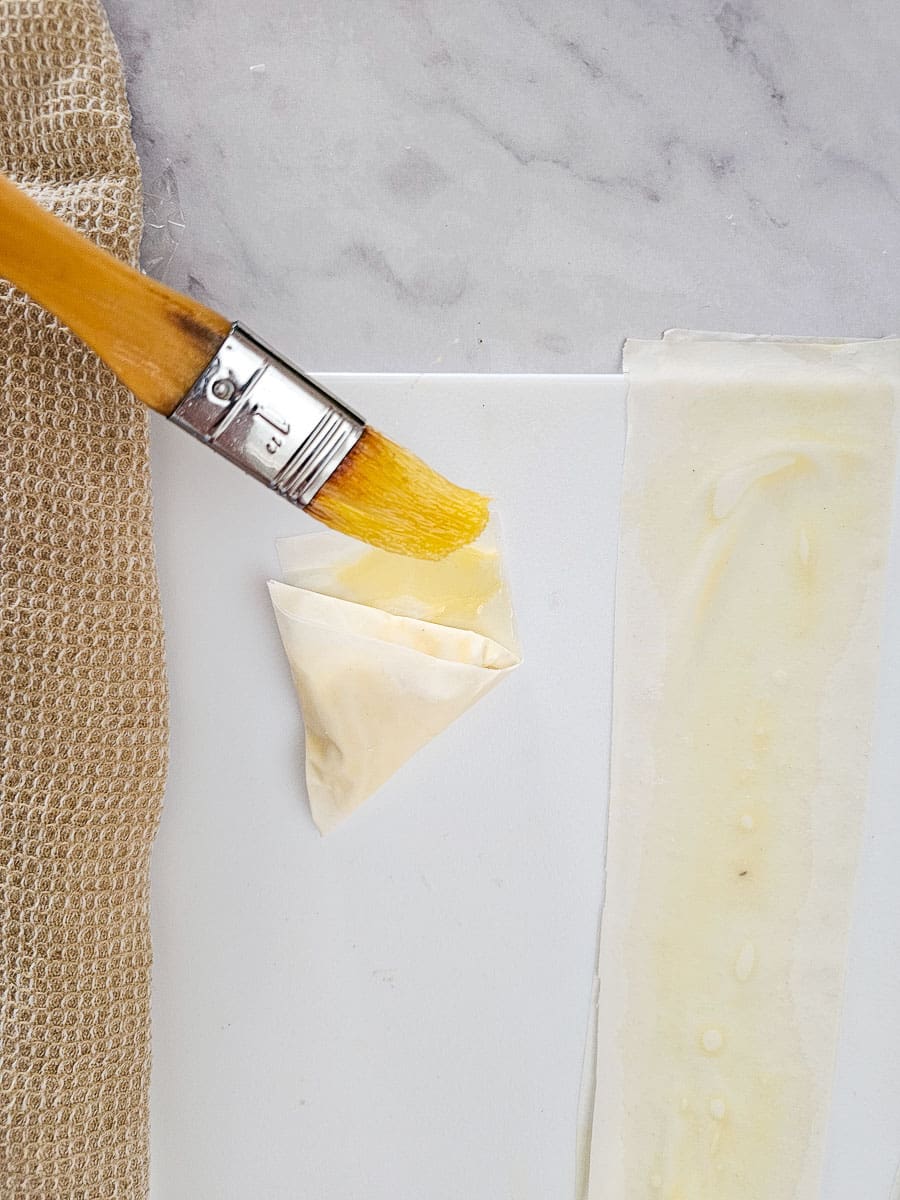
6. Continue this method until you reach the end. Lightly brush the end and top of the Cheese Triangle with a little melted butter. Place sealed edge facing down on baking tray.
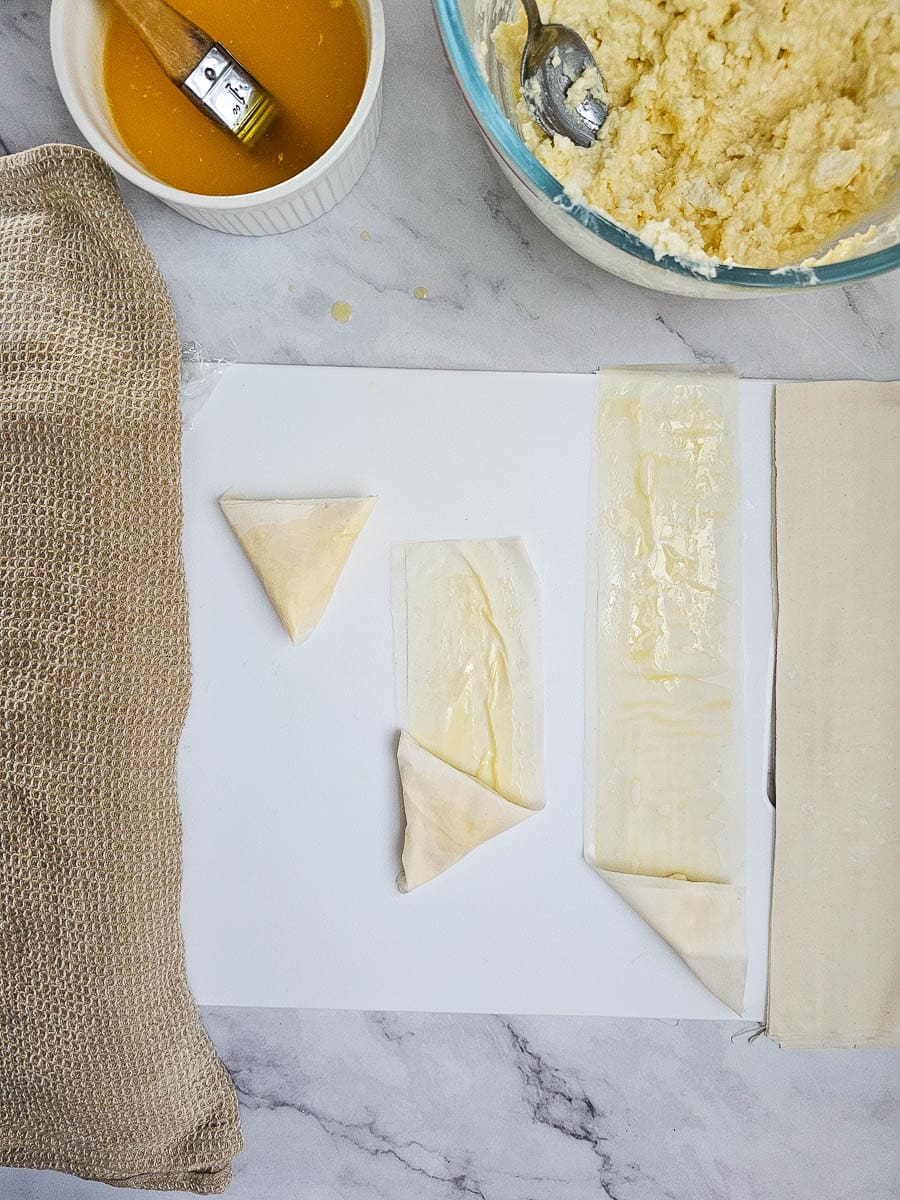
7. Repeat steps until you have finished using all your filling. Note: This method will give you a perfect equilateral triangle. It might look a little non-triangular on your first couple of folds, but it evens out by the time you get to the end.

8. To speed things up a bit, you could do three at a time, but not more than this as you don’t want your pastry to dry out.
Watch the video below to see how to fold a Cheese Triangle
To bake
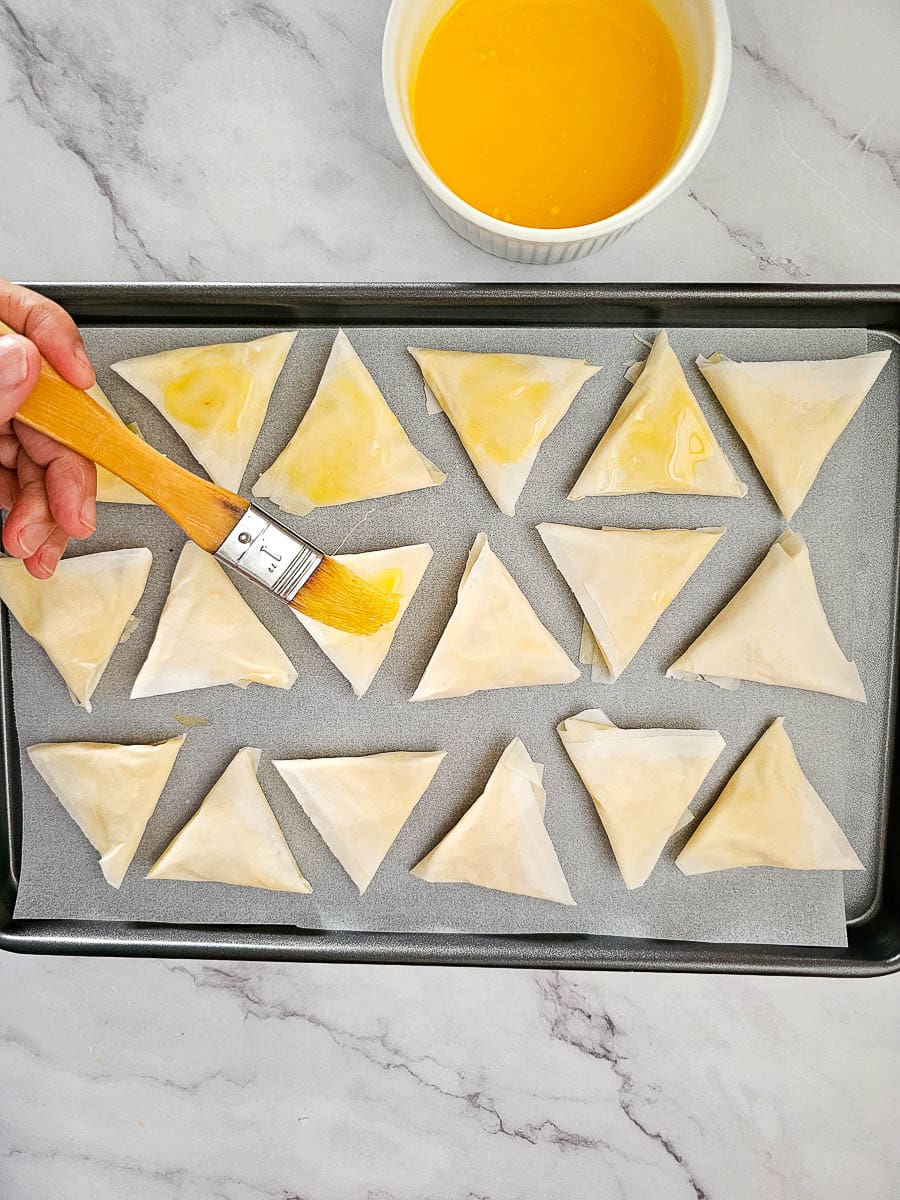
1. Preheat oven to 180°C / 350°F. Line a baking tray with baking paper and brush tops of Cheese Triangles with melted butter.
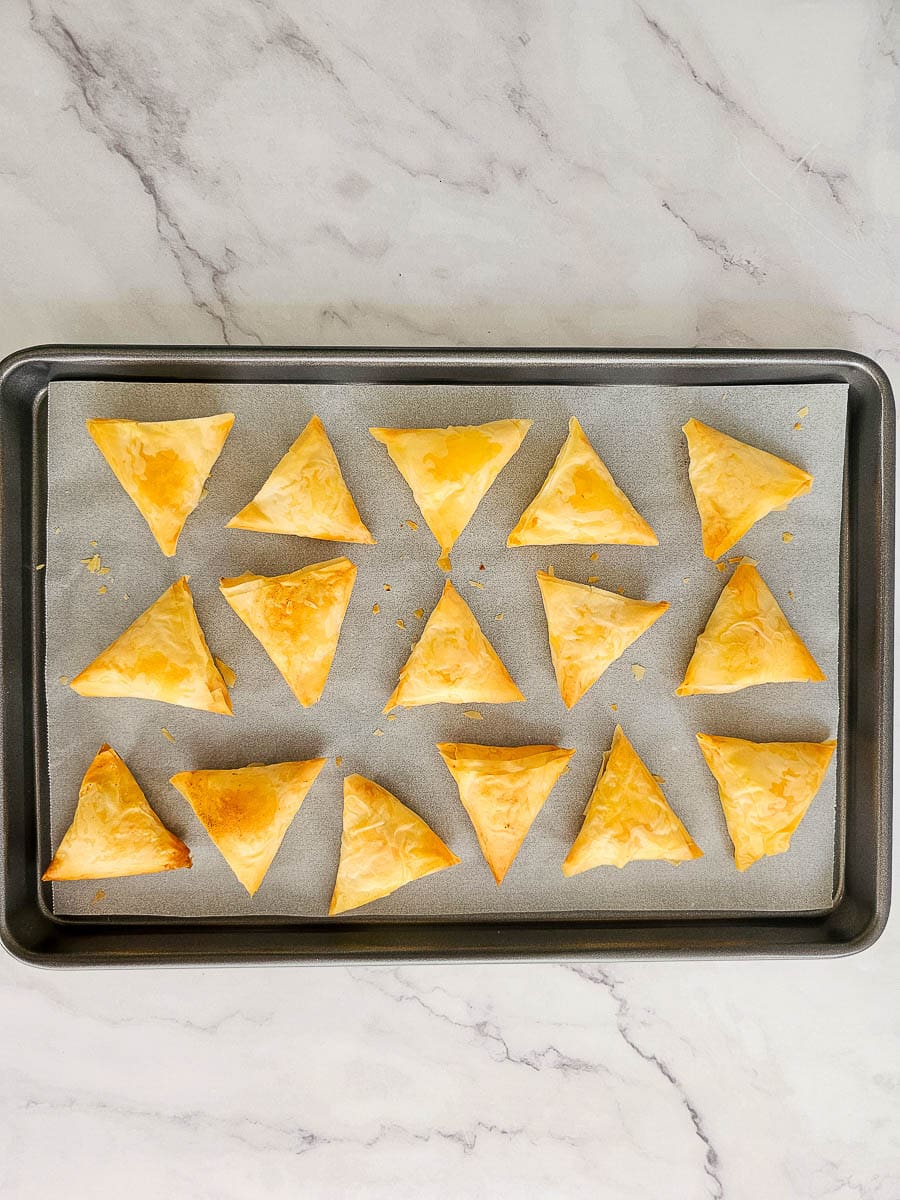
2. Bake Cheese Triangles in a moderate oven for approximately 18-20 minutes or until golden and crisp.


Tips for working with filo pastry
Thaw to room temperature
It is easier to work with filo that has been thawed to room temperature in its packaging. For chilled filo pastry, leave at room temperature for two hours before using. For frozen filo, it’s best to thaw in refrigerator overnight, before placing on the kitchen bench to thaw to room temperature. This will prevent it from making some of the sheets soggy and unusable.
Cover filo with a damp cloth or damp tea-towel
Prepare all other ingredients before removing the filo pastry from its plastic bag to begin working with it. Whilst folding cheese triangles, keep a small amount of pastry next to you for convenience, and keep the rest covered with plastic wrap. Also, keep a slightly damp tea-towel on hand to prevent your filo pastry from drying out. If the pastry dries out, it makes it difficult to fold, as the pieces of filo break apart.
How to store leftover filo
Store any remaining filo pastry by tightly rolling it up and wrapping it up with plastic wrap and then sealing it back in its plastic bag before placing it in the refrigerator or freezer. This will stop the filo from drying out, ensuring that it remains suitable for future use.
Make ahead of time and store in the freezer
These freeze really well. I always double the recipe and store in the freezer so that I am ready for any social gathering. Prepare your Cheese Triangles as usual, but refrain from baking them until the day you plan to serve them. As you assemble them, place a layer of Cheese Triangles between freezer-safe paper and store them in a freezer-safe container.
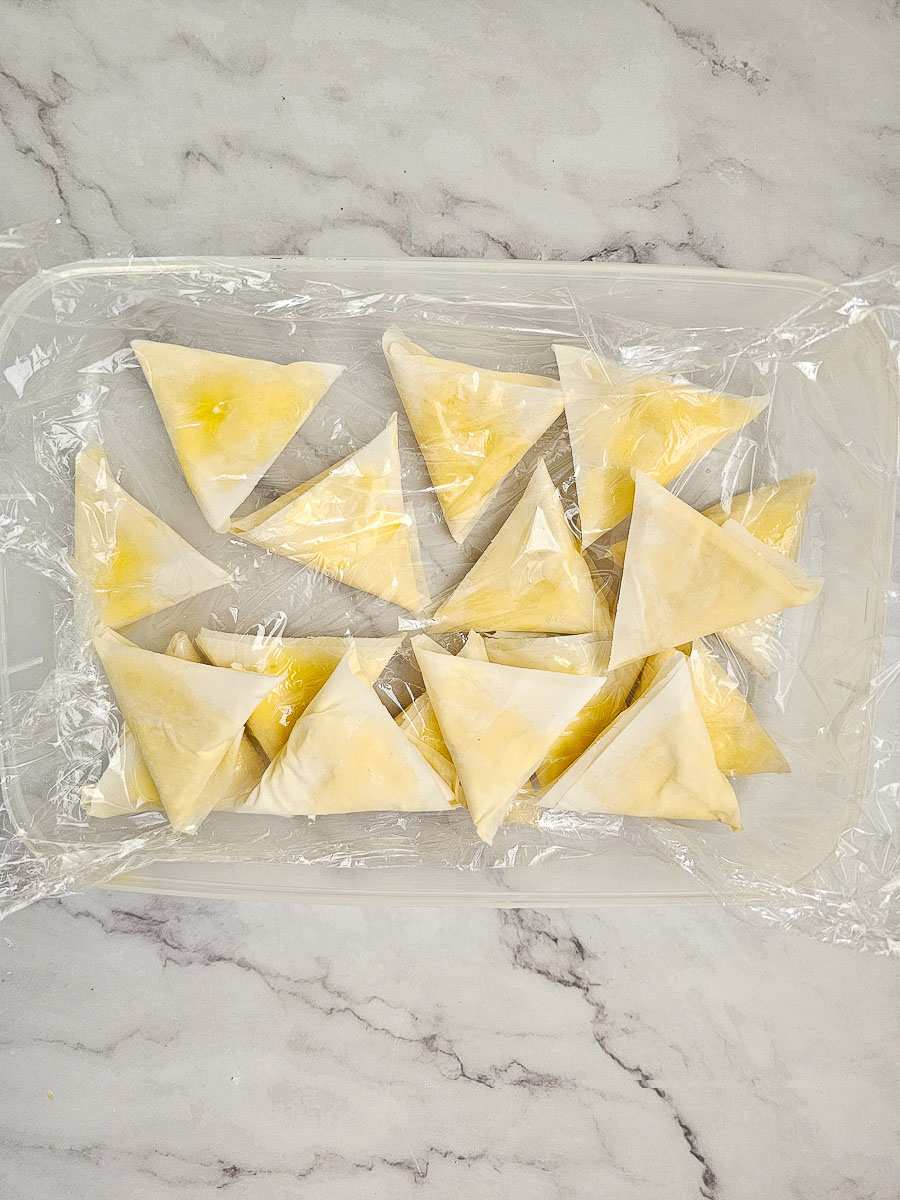
To bake frozen Greek Cheese Triangles
- Preheat oven to 180°C/350°F.
- Take Cheese Triangles out of the freezer and place on lined baking tray.
- Bake for approximately 20-25 minutes or until golden and crisp.


